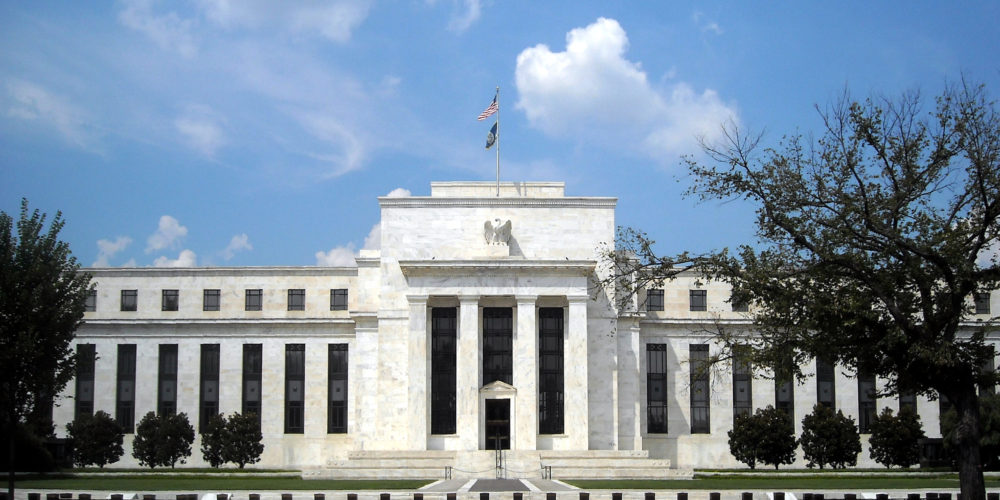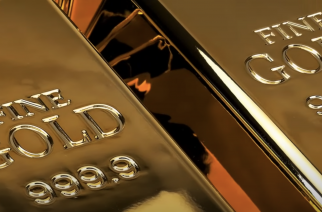Bank Panics
I had a rather lengthy conversation with my granddaughter. She had just spent a really busy week in school on the subject of gold vs paper money. She was learning about the economy which suffered in the 19th and 20th century that was referred to as Bank Panics. Her teacher told her about leaders of the time who were considered responsible public figures, such as J.P. Morgan, organizing a central bank to prevent further Bank Panics. Morgan and other bankers finally got the backing of the government, in 1933, to pass into law their ideas for protecting the economy Since that time there have been no more Panics.
A banking panic is a financial crisis that takes place when people suddenly try to convert their deposits into cash or get out of the banking system altogether, known as bank runs. Many recessions in the U.S. were caused by banking panics including the Great Depression from 1929 to 1939.
My granddaughter couldn’t grasp any of this because she didn’t understand why the federal reserve didn’t prevent this from happening. Her teacher explained that many western countries, during this period of time, were on the gold standard. Many believed the main problem came into being because gold was used as money. Now, we run on paper money and not gold which comes from the government and is regulated by the federal reserve. The federal reserve is not a part of the government, it’s a separate entity.
She still had a problem understanding the concept because “we really didn’t get rid of gold” she told her teacher. Her teacher explained that the vault at the Federal Reserve houses gold for other countries and Fort Knox keeps the gold the U.S. once used. The vault is 80-feet below the street level in New York and 50-feet below sea level. She was absolutely amazed by this and the fact that it’s protected by armed guards, CCTV, and electronic surveillance.
My granddaughter read the information her teacher pulled up on her tablet and she put on her smartphone. She recited that the vault has no doors, the entry is through a narrow 10-foot passageway that is a 9-feet tall, 90-ton steel cylinder that revolves vertically inside a 140-ton steel and concrete frame. The vault is opened and closed by rotating the cylinder 90-degrees.
She continued reading about the vault and that an airtight, watertight seal is formed by lowering the cylinder three-eighths of an inch into the frame. Two levers insert large bolts which holds the cylinder in place. By unlocking a series of time and combination locks, personnel can open the vault. These locks are multiple control and no one individual has all the combinations to open the vault.
She asked why they were protecting something that is worthless and no one uses anymore? I told her that it stores the gold belonging to other countries and Fort Knox stores the gold the U.S. once used.
She then told me that the depository is actually an army base and the building that houses the vault was made out of North Carolina granite. When the government ordered citizens to turn in their gold coins, these coins were melted down into bars and shipped by rail, under heavy guard, to the depository.
During World War II, the Constitution and Declaration of Independence were stored there as well. It also housed four copies of the Magna Carta which were on display at the New York World’s Fair in 1939.
From World War II into the Cold War, morphine and opium were also stored at the Depository, should the U.S. become unable to get new supplies of opium. This was before the invention of synthetic painkillers.
At this point she became even more confused, wondering why we would store an illegal drug and protect it? Why not just dump everything – gold and drugs alike?
Reading a section of the Constitution she discovered that no state is allowed to coin money and no state can make anything but gold and silver coins as tender in the payment of debts. She looked at me and said, that means the federal government cannot do anything unless authorized by the Constitution. Would that mean only private mints can coin money?
I scratched my head and told her I couldn’t answer that question because the Constitution is a difficult document that men in power have interpreted to suit their means. These people have ignored the Constitution all together in the name of “National Security”. I explained that “National Security” is actually an effort to prevent our government moving into a dictatorship.
Why We Stopped Using Gold For Paper Money:
The Central Bank, created by Morgan his his buddies, is not a bank for people like us, it’s only for its members. It holds deposits as reserves by which commercial banks can provide loans.
At the time when the Federal Reserve was created in 1913, gold and silver were still legal money in the U.S. Those who had gold and silver coins could go into a store and buy whatever they wanted or needed or they could deposit their coins in their banks. In some cases, they could exchange notes into coins! This practice became really rare by 1917 when banks started shipping their gold to their regional federal reserve banks. This gold was then added to the bank’s reserves.
By then, people were no longer allowed to used gold coins, only paper money or notes. Unfortunately, they really believed they could trade their paper money for gold as they were promised.
Unfortunately, the worse was yet to come when in 1933 Roosevelt ordered everyone to turn in their gold or pay the consequences. People were assured this was a necessity, known as the “gold recall”. They called it a national emergency and the American people realized the government could take away any of their rights in a national emergency if they chose to.
When Americans Lost Their Rights:
During the American Civil War, Abe Lincoln suspended habeas corpus and ordered the arrest and imprisonment of anyone who challenged his policies. “Habeas Corpus is a writ requiring a person to appear before a judge or court for investigation of a restraint of the person’s liberty, used as a protection against illegal imprisonment.”
During World War II, no one was allowed to read the Bill of Rights in public, if they did so, they would be arrested.
A Constitutional Convention is a violation of rights because delegates can create a new government rather than revising the existing one. Therefore, “national security” required getting rid of the old government. When Roosevelt delivered his first inaugural address, he called the Depression an “emergency comparable to war”, thus setting up Americans for drastic measures. Later on, when he ordered everyone to turn in their gold, he said they had nothing to worry about. Paper money was guaranteed to be legal tender. It was explained that gold was supposedly causing the prevention of recovery even though gold standard had been gone for almost 20 years by then. It was also believed that prices were too low and the only way to alter that was to print more money! My granddaughter asked me, how were they planning on doing that if there was no gold?
I told her, technically, gold did cause the bank panics. Banks were engaging in fractional reserve lending. They would promise to redeem all bank notes and deposits they were liable for in gold coins. What happened, they expanded the bank notes and deposits beyond the amount of gold! Technically that’s embezzlement, though bankers didn’t quite see it that way.
Banks were literally creating a multitude notes against the weight of gold and then the notes were circulated as money. In other words, they were inflating the money supply. Banks continued this practice until people started getting really nervous about banks being able to pay out in gold. At some point, other banks tried to clear payments and discovered the banks causing inflation could not legally do that.
Once people discovered what some of these banks were doing, they lost trust in all banks. That led to Bank Panic! Unfortunately, bankers and most economists saw nothing wrong in their practices or expanding credit beyond the money in the vault. Many believed it was good practice and would only be unethical if banks expand too far.
Instead of stopping fractional reserve lending, they took their hate out on gold. If they did not have to redeem notes in gold, they could continue to inflate at an even higher level. They believed that by ridding of gold, they could set up an institution that provides funds during an emergency. And that this would end the chaos.
I explained to her, that their entire philosophy fell on its face. This was because gold was the reason inflation would be kept in check. Without gold, the over production of paper money, known as the dollar, would cause a loss in its value. When economists concentrated more on prices instead of money supply they serious overlooked the inflation of the 1920s. They believed inflation was simply the rise in prices. Except, there was very little inflation in the 1920s except on the stock market. Then it hit! The stock market crashed! Economists were in shock except for the one economists who foresaw the stock market crash, Austrian-born Ludwig von Mises
She asked me, did economists see their mistakes? I replied, No! Once again, they blamed gold. President Roosevelt took gold away from people but the Great Depression continued for a long time afterward.
Gold is and always has been a very valuable commodity even though it does not serve as tender. It only makes sense that the government would keep it safe. So why is gold so highly valued? She asked.
That said, not all governments have kept their gold. The UK sold off half of their reserve between 1999 and 2002. I told my granddaughter, people should be able to decide what they wish to use for money. It would only make common sense to have something that cannot be easily increased such as gold. The banking world should be held accountable by the laws of the market. They should not be able to manipulate the market and cloak themselves in protection clauses.
By the time our conversation ended, I think she understood economics in a better light. As a matter of fact, I think I learned something too!
Go Back To All Articles Here: https://goldnotes.com/category/latest/





